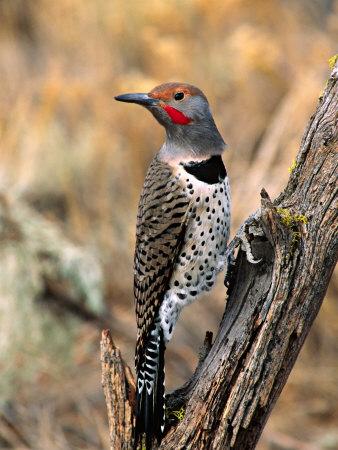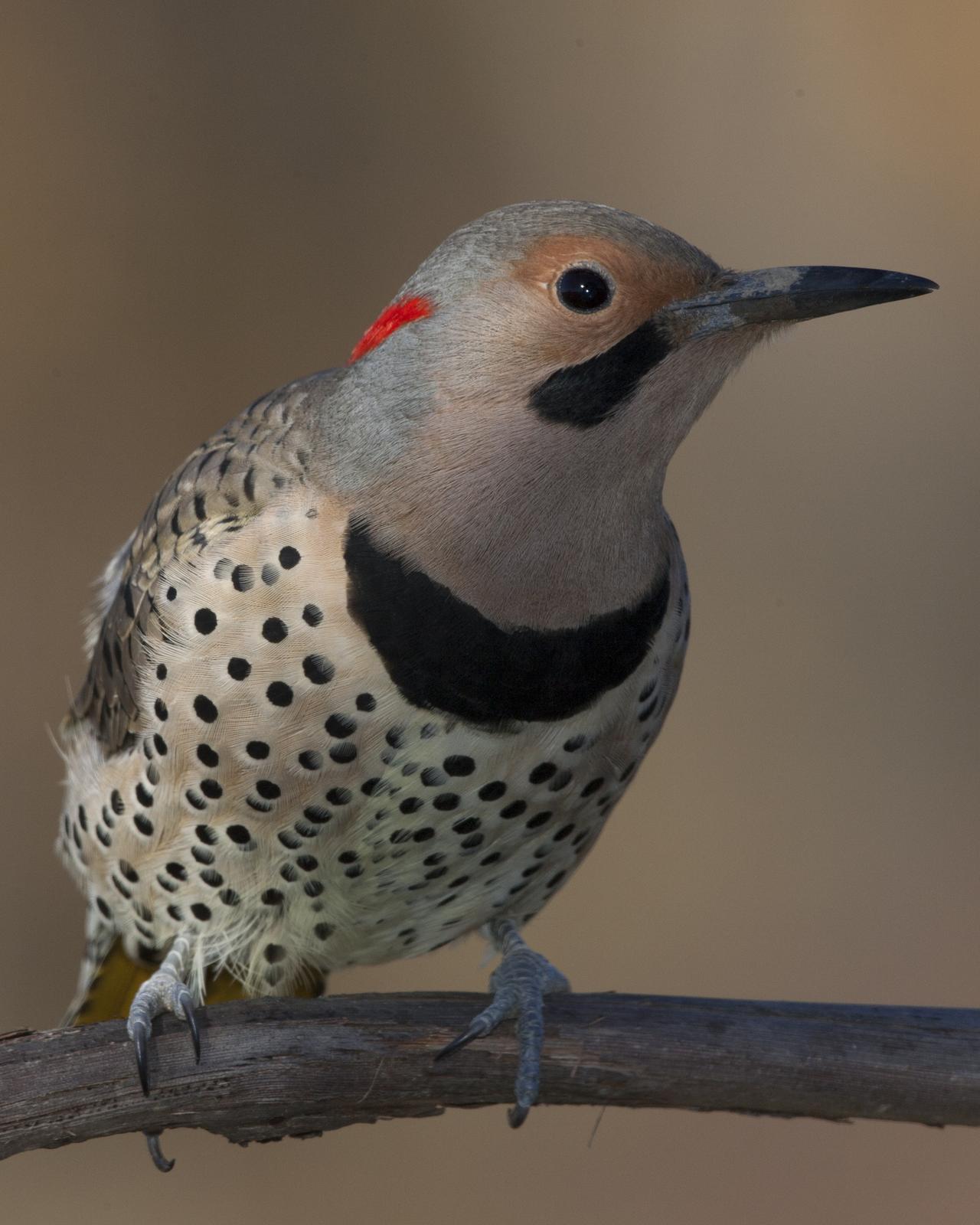
They will also eat other insects, as well as berries, nuts and grains.) They don’t walk well, so you will see them hopping in the grass and sticking their heads up to watch for danger. (Flickers eat more ants than any other North American bird. Flickers spend more time on the ground than any other woodpecker, searching for ants, which is their main diet. When it comes to foraging for food Flickers are slightly different in their methods than the other woodpeckers.

The family group stays together for several weeks. Feeding is done by both sexes and fledging is in about 4 weeks. (Flickers are also known to lay eggs in nests of other birds: Red-headed WP, Tree Swallows, Bluebirds and House Sparrows.) Incubation is done by both parents (mostly male at night, shared during the day) and takes 11-12 days. There is a great deal of competition for nesting cavities with other birds (Screech Owls, Kestrels, Great-crested Flycatchers and European Starlings) as well as squirrels. Nest building, or repairing, can take 1-2 weeks, can be from 2-60 feet off the ground and is done by both sexes. Males establish territory by drumming, calling, head-bobbing and tail spreading showing yellow underneath. Male Flickers will return each year to the same nesting cavity and if the female from last year also returns, they will mate again. Males and females have the same markings except for a black “mustache” on the males, which the females do not have. When flying, besides seeing the yellow in wings and tail, you will also see a distinctive white rump above the black edged tail. There is some inter-breeding where the ranges overlap.) Flickers can be found in just about any habitat: from deep woods to city parks.įlickers have brown backs and speckled breasts with a narrow black bib and a red patch on the nape of the neck. (There is also a Red-shafted Flicker which is found only in the western part of the US. This bird gets its name from the yellow found under the wings and tail, which you see when it flies. They come readily to our bird baths, and sometimes to our suet feeders as well. (The others are the Downy WP, Hairy WP, Red-bellied WP, Red-headed WP and the Yellow-bellied Sapsucker.) As a member of the woodpecker family you will find these wonderful birds drumming on trees all over LI in the springtime, as they are local nesters.

Hear that “wicka, wicka, wicka” jungle-like sound? That’s one of the six woodpeckers that we get on Long Island, the Northern or Yellow-shafted Flicker.


 0 kommentar(er)
0 kommentar(er)
